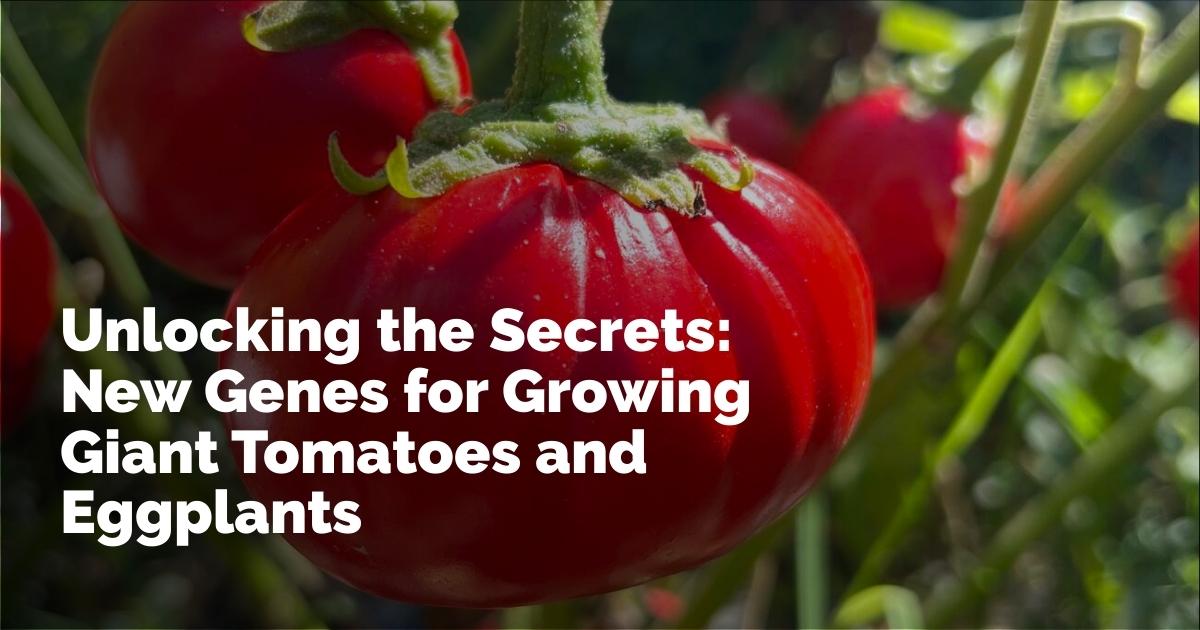The Future of Agriculture: Bigger, Tastier Fruits on the Horizon Thanks to Genetic Innovation
A groundbreaking discovery by a team of scientists at Johns Hopkins University and Cold Spring Harbor Laboratory could soon revolutionize the way we enjoy fruits and vegetables, particularly tomatoes and eggplants. The researchers have identified specific genes that determine the size of these fruits, promising a future with larger, more flavorful produce accessible on a global scale.
Discovering the Genetic Pathway to Larger Fruits
The quest to enhance the size of tomatoes and eggplants began with an ambitious project to decode the complete genomes of 22 crops within the nightshade family, which encompasses not only tomatoes and eggplants but also potatoes among other plants. Through meticulous computational analyses, the research teams traced the evolution of genes across millions of years, uncovering that many genes have duplicated or disappeared throughout time.
One key finding was the discovery of genetic duplicates known as paralogs. Understanding these paralogs' roles allowed the researchers to manipulate how certain traits, such as fruit size and shape, are expressed in the plants. Using the cutting-edge technology CRISPR-Cas9, the teams adjusted the expression of these genes to investigate their influence on plant development. For instance, by modifying just one of the duplicate copies of the CLV3 gene in an Australian forest nightshade, they managed to spur the growth of larger fruit without compromising fruit quality.
The researchers published their findings in the prestigious journal Nature, suggesting that the full mapping of these genomes provides a treasure trove of opportunities to innovate and improve agricultural products. With these genome sequences, researchers have a clearer view of genetic divergences, allowing for targeted improvements and advancements in crop quality.
Harnessing the Power of Genetic Engineering
The implications of these discoveries extend far beyond backyard gardens and farmers' markets. The potential to tweak genetic pathways to produce larger, tastier fruits could transform agricultural standards and practices worldwide. With the proper regulatory approvals, engineered seeds could be distributed globally, introducing new, higher-yield crops into agricultural markets.
"We could mail an engineered seed to Africa or any other region of need, unlocking new markets," stated Michael Schatz, co-author of the study and a geneticist at Johns Hopkins University. This possibility could especially benefit regions where traditional crop varieties are too small to be viable for large-scale farming.
The Gene Behind Bigger, Better Tomatoes and Eggplants
In particular, one gene, SaetSCPL25-like, found in the African eggplant, indicates its crucial role in determining the number of seed cavities—or locules—in a fruit. This gene influences the fruit's size; the more locules present, the larger the fruit. When researchers altered this gene in tomato plants, it resulted in tomatoes with more locules, thus larger sizes. Consequently, advances in African eggplants can now reciprocally enhance tomato development, heralding a future of larger, tastier tomatoes.
A New Frontier: Pan-Genetics and Its Promise
The extensive study of various species demonstrates the importance of collaborative research across different genetic fields. This approach, which researchers term as 'pan-genetics,' offers a pathway to numerous possibilities, including the creation of diverse new fruits and flavors that will satisfy increasingly global tastes and demands.
Supported by major funding bodies, including the National Institutes of Health, the National Science Foundation, and the Howard Hughes Medical Institute, the project underscores the vast potential of genetic research to support global agriculture.
Revolutionizing Tomato Cultivation
This research effort is part of a larger initiative, which leverages software developed by Johns Hopkins University and similar institutions, to map genomes not only of plants but also of dozens of animals. These endeavors hold significant potential for enhancing our understanding of human health, evolution, and ultimately, agricultural practices.
In a separate study examining 100 varieties of tomatoes, the scientists revealed over 230,000 DNA variations. These can be selectively manipulated to influence key attributes such as size, flavor, and even harvestability—a promising advancement towards creating the ideal tomato to suit growers and consumers alike.
Genomic Mapping: Bridging the Gap Between Agriculture and Technology
The researchers' journey into the depths of genetic sequencing opens up a new world where technology and agriculture converge. By decoding the mysterious links between DNA variations and phenotypic expressions in fruits, scientists are gearing up to address challenges such as food security, dietary diversity, and agricultural sustainability.
Johns Hopkins researchers, including Michael Schatz—the genetic code-breaking expert behind this innovation—continue to delve deeper into genomes, from tomatoes to cancer cells, unlocking the secrets to life's complexity for a future where genetic engineering could foster more resilient, nutritious, and sustainable crops.
In conclusion, the intersection of genetic research and agriculture presents a tremendous opportunity to not only diversify our diets but to meet the growing global food demand. As these discoveries make their way from the laboratory to the fields, the dream of larger, tastier, and more abundant produce seems tantalizingly close, setting the stage for what could be a new era of agricultural abundance and culinary delight.
출처 : Original Source

